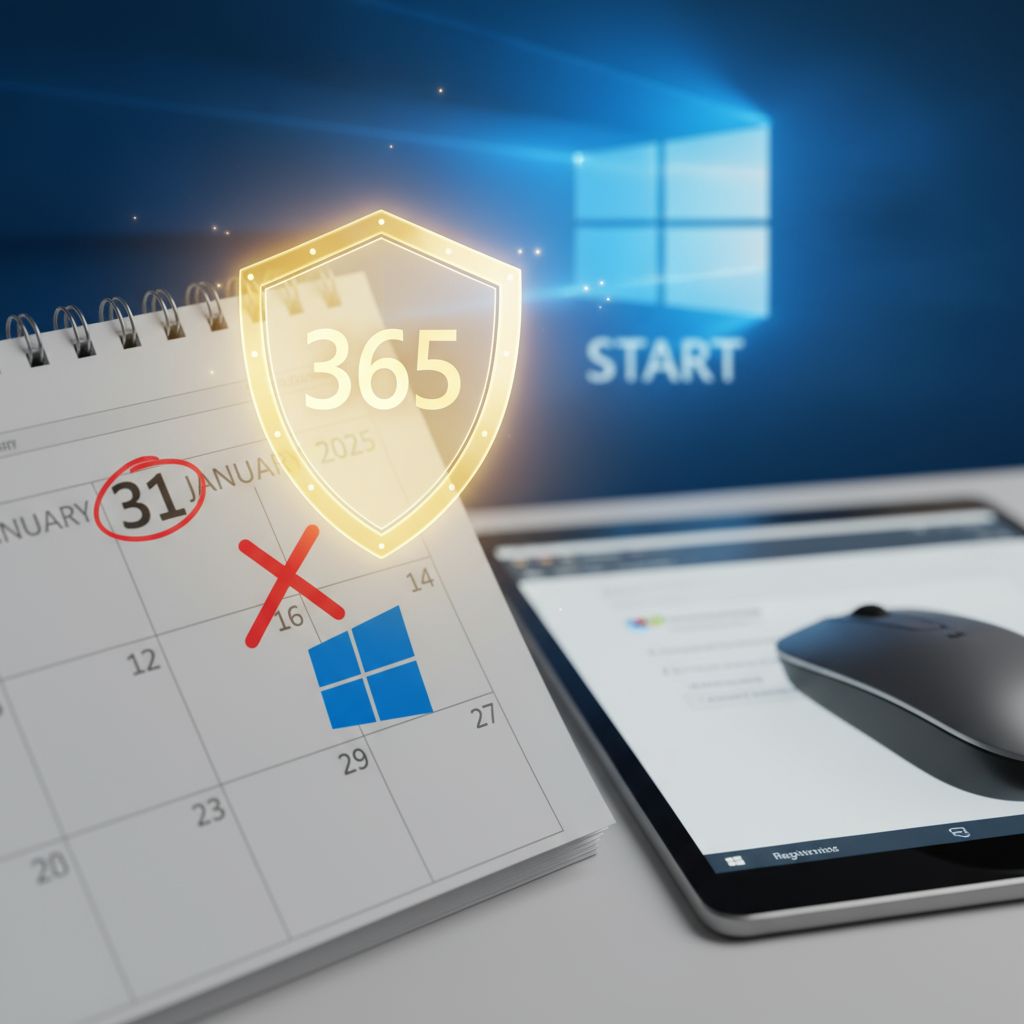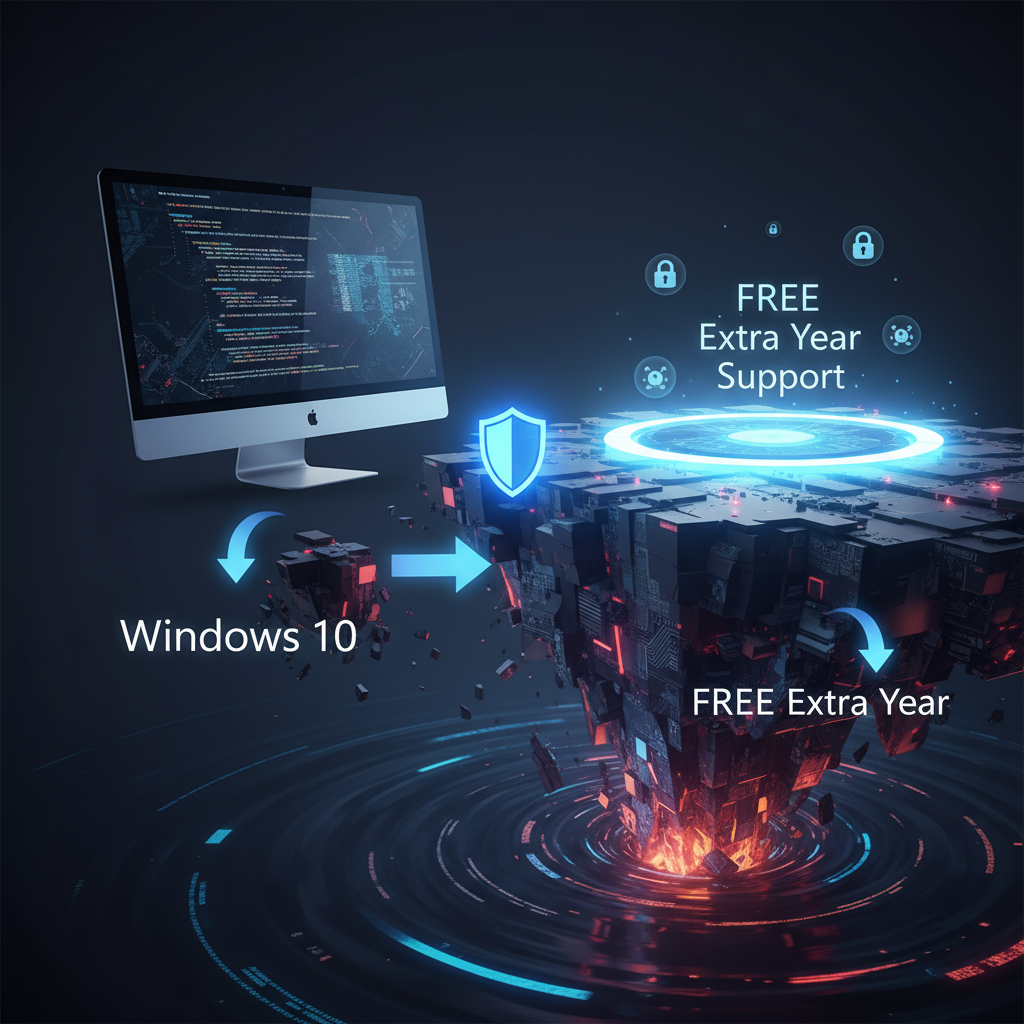Windows 10 Support Ends Today, But Here’s How to Snag an Extra Year for Free!

Panic stations? Not quite. If your trusty PC is still humming along on Windows 10, you might have woken up with a slight dread today. That’s because, as of right now, Microsoft is officially ushering Windows 10 into its “end of life” phase. But before you rush out to buy a new machine or resign yourself to an insecure digital future, take a deep breath. We’ve got some surprisingly good news for you, offering a free reprieve for those not quite ready to make the jump.
Your Windows 10 PC won’t suddenly brick itself today, nor will it stop working. The immediate concern, however, is the cessation of crucial security updates.
The Security Update Cliff: Why It Matters

Think of security updates like a constant stream of digital vaccinations for your computer. They patch vulnerabilities, defend against new threats, and generally keep your system safe from the ever-evolving landscape of cyberattacks. Without them, your Windows 10 PC becomes increasingly susceptible to malware, viruses, and other malicious actors looking for easy targets.
This isn’t just about losing data; it’s about protecting your privacy, your financial information, and your digital identity. Running an unsupported operating system is akin to leaving your front door unlocked in a bustling city – it’s an unnecessary risk that can have severe consequences. So, doing nothing really isn’t an option for anyone who values their digital security.
Your Immediate Options (Before We Get to the Free Year)
Before revealing the secret to a free year, it’s important to understand the traditional paths forward now that Windows 10 has reached its official end of life:
- Upgrade to Windows 11: This is Microsoft’s preferred solution and, for many, the most straightforward. If your hardware meets the Windows 11 system requirements (which include a UEFI firmware, Secure Boot capability, and a TPM 2.0 module), a free upgrade is likely available. Windows 11 offers a refreshed interface, improved performance, and enhanced security features. It’s the most future-proof option.
- Purchase an Extended Security Update (ESU) License: If upgrading isn’t an option, perhaps due to older hardware or software compatibility issues, Microsoft does offer Extended Security Updates. This is a paid service that provides continued security patches for up to three additional years. However, the cost for an ESU license can be significant, typically starting at a few hundred dollars and increasing each year. It’s a short-term solution primarily aimed at businesses and organizations, perhaps less so for the average home user.
- Switch to a Linux Distribution: For the more adventurous or privacy-conscious users, migrating to a Linux-based operating system is a viable alternative. Distributions like Ubuntu, Linux Mint, or Fedora offer free, open-source, and highly customizable environments. They are generally less susceptible to the type of malware prevalent on Windows, and they can often breathe new life into older hardware. The learning curve, however, can be steeper for those unfamiliar with Linux.
These are the established pathways, each with its own pros and cons. But what if you need a little more time, without the financial outlay of an ESU license?
The Secret to a Free Extra Year of Windows 10 Support (Yes, Really!)
Here’s the trick, and it’s surprisingly simple: It seems Microsoft is aware that not everyone is ready or able to leap to Windows 11 immediately. While the specific details are still emerging, what we’re seeing is a grace period, effectively giving many users an extra year of security updates for free.
Historically, Microsoft has sometimes offered limited extensions for critical security updates to help users transition. It appears a similar mechanism is being quietly extended for Windows 10 users, allowing them to remain secure for an additional 12 months without purchasing an ESU license. This acts as a valuable buffer, providing more time to plan your upgrade, save for new hardware, or explore alternative operating systems.
How to Access This Free Year: The key is often tied to ensuring your system is fully updated to the very last major Windows 10 release. If your system is up-to-date, it may automatically be enrolled in this extended security update program for the next year. Keep an eye on your Windows Update settings; critical security patches should continue to appear.
It’s important to reiterate that this is likely a temporary measure. This free year is a gift, not a permanent solution. Use this time wisely to evaluate your options and prepare for the inevitable full transition away from Windows 10.
Making the Most of Your Extended Time
So, you’ve got an extra year. Fantastic! Don’t squander it. Here’s how to make the most of this unexpected grace period:
- Back Up Everything: This can’t be stressed enough. Regardless of your future path, having a recent, full backup of your important files, photos, and documents is non-negotiable. Use an external hard drive or a cloud service.
- Assess Your Hardware: Can your current PC run Windows 11? Use Microsoft’s PC Health Check app to find out. If not, start researching new computers that meet your needs and budget.
- Evaluate Software Compatibility: If you use specialized software, especially older versions, check if it’s compatible with Windows 11 or if Linux alternatives exist. Some older programs might be the primary reason you’re sticking with Windows 10.
- Explore Alternatives: If a new Windows 11 machine isn’t in your budget or you’re seeking a different experience, dedicate some time to researching Linux distributions. Many offer “live boot” options from a USB drive, allowing you to try them out without installing anything.
- Stay Vigilant: Even with the extended updates, maintain good security practices. Use robust antivirus software (Windows Defender is a good start), be wary of phishing attempts, and practice safe browsing habits.
Conclusion: A Reprieve, Not a Solution
The end of mainstream support for Windows 10 is a significant milestone, and the cessation of security updates is a serious concern. However, this unexpected free year provides a valuable cushion for many users. It’s an opportunity to thoroughly plan your next steps without feeling rushed into a decision.
Whether you choose to embrace Windows 11, commit to an ESU, or venture into the world of Linux, the important thing is to have a strategy. Use this extra time wisely to ensure your digital life remains secure and productive long after Windows 10 officially rides off into the sunset for good.

